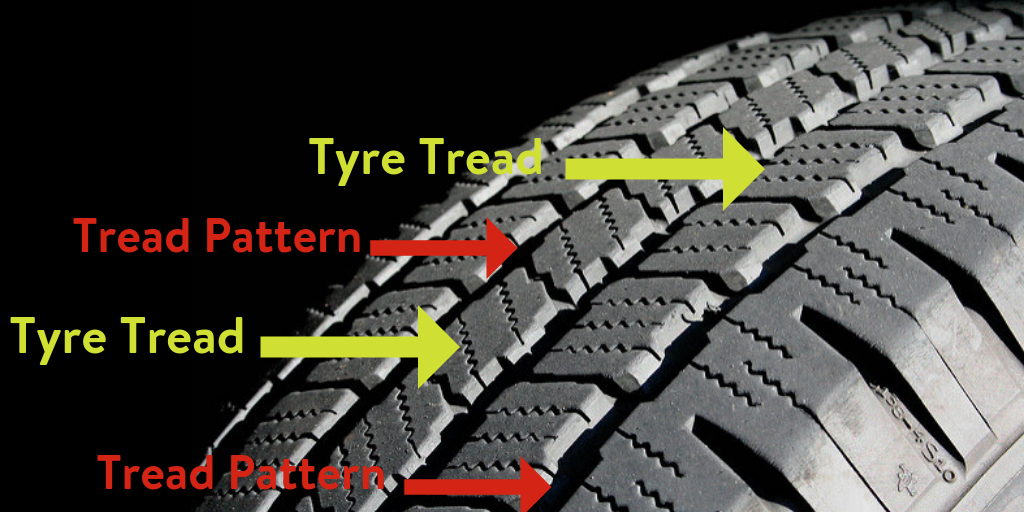
How long should tyres last?
When should you replace your tyres? Want to know how long your tyres will last you? Here's how to check your tyres and how to make them last longer!
There's no definitive answer for how long your tyres should last, but it’s recommended that you should always replace your tyres once they are ten years old. The advice for how many kilometres your tyres last varies widely from 10,000 to 50,000 kilometres.
The lifespan of your tyres will vary depending on a number of factors including:
- your driving habits (highway vs stop-start city driving)
- the climate
- the design of the tyre
- road condition
- how well you maintain your tyres
Even if your tyres look like they're in good condition, it’s recommended you replace them after ten years from their manufacture date. This includes spare tyres. Even if you think your tyres could last a little longer, it’s better to be safe than sorry.
Get your tyres checked every year after five years
Regardless of how far you drive, once your tyres are five years old you should get them checked yearly. After five years a tyre will begin to deteriorate, as it dries out and the rubber loses its suppleness. This happens whether you drive a lot or very little, and also affects your spare tyre. Your mechanic should check your tyres as part of your regular service, or you can get them checked at a tyre shop. Many tyre shop offer a free tyre health check.
Nine easy ways to increase your tyre's lifespan
There are some easy ways to check your tyre's condition, as well as some simple steps to lengthen their lifespan so you can save money on tyre replacements.
- Always check your tyre tread

What is tyre tread and why does it matter?
Tyre tread is the rubber on the tyre that makes contact with the road or ground. The grooves on your tyres is the tread pattern. The tyre tread is the raised section that touches the ground when you drive.
As a tyre ages and wears down, the tread is worn off. This reduces its effectiveness and safety. The grooves in the tread are specially designed to keep you safe in a range of driving conditions. In fact, there are a variety of different tread patterns for this reason: some patterns are optimised for driving on snow, or to reduce noise or increase grip.
The grooves in tyres also allow water to be expelled to prevent hydroplaning. If the depth of the grooves wear down too far, your tyres can’t expell all the water they encounter. This creates a thin barrier of water between the tyre and the ground, causing the car to skid across the wet road.
How to check your tyre tread

An easy way to check your tread pattern is to put a coin into the groove to see how deep it is. If you stick a 20 cent coin in and the tread isn’t touching the platypus’ bill, it’s too shallow. You can also check by running your hand over the tread and making sure you can feel all the grooves.If you aren’t sure, take your car to a tyre shop for a checkup.
Look for a tread wear indicator on your tyre, usually marked by a triangle on the sidewall of the tyre. Inside one of the grooves in line with that triangle, you will see or feel a raised section which indicates the minimum depth of the tread. If the rest of the tyre is level with this raised section, your tyre is due for replacement.
Offset the cost of your car tyres and maintenance by renting out your car with people in your community, like Thomas in Melbourne does!
We organise the technology, damage cover and support so you can safely rent out your car and earn an income.
- Keep your tyres of out the sun
Park your car away from direct sunlight. This will minimise the damaging effects of UV rays on the rubber. If you don’t have an indoor parking spot, try to park in a shady area.
- Swap your tyres around
Check that each tyre is wearing at a similar rate. To keep your tyres wearing evenly, rotate them regularly – including the spare if it’s a full sized tyre – so that the front tyres are placed on the rear of the car and vice versa. You should do this every service or every 10,000 kilometres. Your front tyres will wear more quickly because of the position of the steering, so it’s important to rotate them regularly to spread the wear evenly.
- Get your wheels aligned
Your wheel alignment will affect how long your tyres should last, and the way your car handles. Your mechanic should do this as part of your regular service, but if you're concerned that your wheel alignment is off, take it in to the mechanic or tyre shop for a check and re-alignment.
- Don’t be a stuntman
This should be obvious, but drive carefully. Don’t be a wannabe stuntman: aggressive cornering, burnouts and hard braking will all wear your tyres down quickly (not to mention the safety concerns).
- Watch your speed!
Aside from the safety and legal issues, higher heat generated from high speeds wears tyres prematurely.
- Keep your car clean
The heavier your car, the more pressure you are putting on your tyres, so don’t overload it by driving around with a boot full of junk. Make sure to remove any heavy items you don’t need in your car.
- Keep your tyres inflated to the correct PSI
It’s easy to find your tyre’s correct correct operating pressure, usually measured in pounds per square inch (PSI). Check inside the driver’s door: there should be a placard there that will show the front and rear tyre pressure recommendations. Depending on the car, these may be different. If the placard isn’t in the driver’s side door frame, look inside the fuel door, the glove box or your car’s manual.
Check your tyre’s current pressure by heading to a petrol station with a tyre inflation service. Many of them offer it for free, or sometimes you may need to pay a dollar or two to use it. Attach the hose to the valve on each of your rims and the machine will do the rest of the work. Depending on the machine, you can either set the PSI you want, or manually fill it. Aim to check your car's tyre pressure monthly.
Bonus Tip:Take the valve caps off your tyres before putting your money in the machine to avoid running out of time!
Some simple checks and common sense can help maximise the lifespan of your tyres
It’s important to remember that there is no one final answer to how long tyres last. If you aren’t sure if your tyres are roadworthy, take them to a professional to get them checked.










